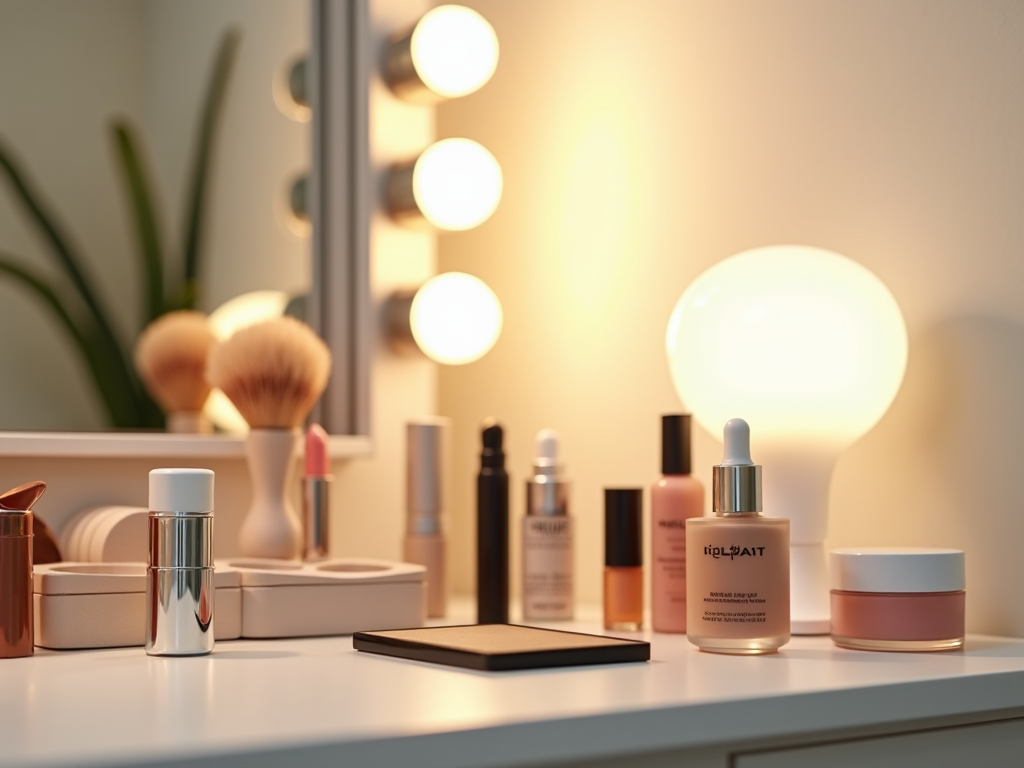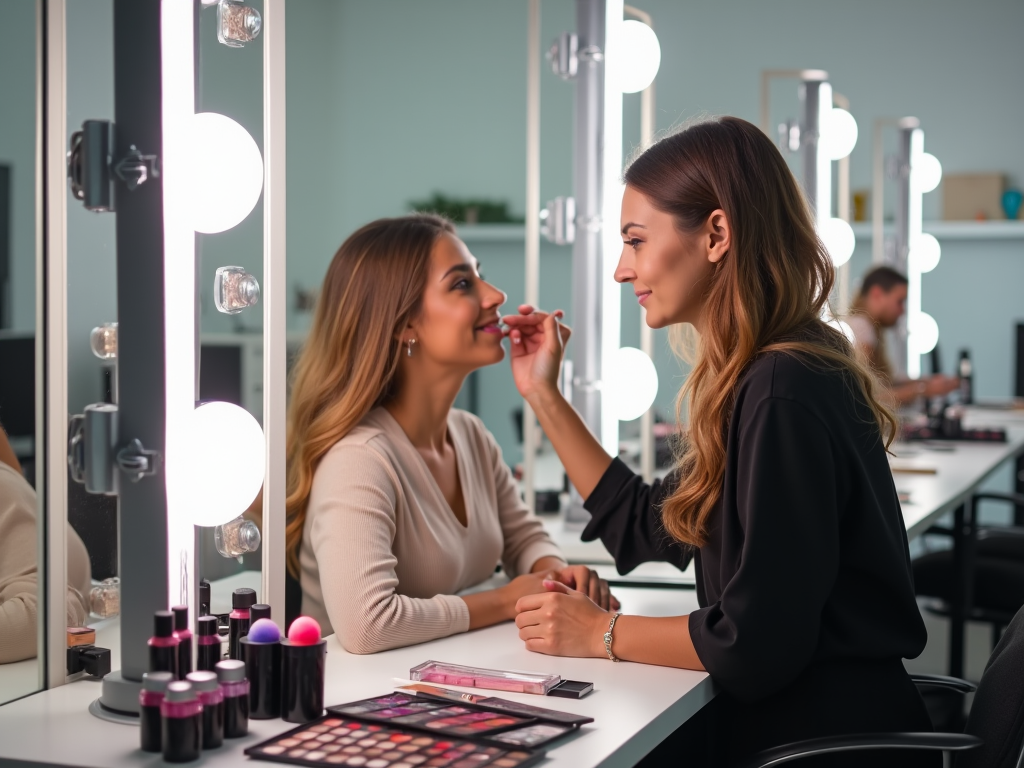Have you ever wondered why some people seem to master the art of makeup application effortlessly while you struggle to find the perfect look? The answer often lies not just in the products they use but in the lighting they apply them under. Quality lighting can transform an everyday makeup routine into a professional-level application. By understanding the intricacies of how light interacts with cosmetic products, you can elevate your personal makeup game. Whether you prefer a natural glow or a bold look, proper lighting can make all the difference. Dive into these essential lighting tips and learn how to harness light to achieve that flawless finish.
Understanding the Importance of Lighting in Makeup Application

Lighting is more than just a practical consideration; it is a fundamental aspect of how you perceive color, texture, and application. When the lighting is poor or inconsistent, it can lead to mismatches between your makeup and your natural skin tone. This can ultimately result in a less polished appearance or even a makeup disaster. Using the right lighting allows you to see the true colors and subtleties of your makeup, enabling you to blend, highlight, and contour effectively. If you’ve ever walked outside and realized your makeup looks completely different in natural light, you’ll understand the necessity of proper lighting. Emphasizing the significance of an ideal environment, let’s explore how various light sources impact your makeup application.
Different lighting sources can drastically change how your makeup looks. Here are some common types of lighting you might encounter:
- Natural Light: The best type for seeing true colors, particularly when applying foundation and blush.
- Incandescent Light: Creates a warm glow but can wash out some colors, making makeup appear less vibrant.
- Fluorescent Light: Provides a stark, bright light that can highlight imperfections but may mislead color perception.
The Best Lighting Techniques for Flawless Makeup

So how can you leverage these light sources for optimal results? Mastering effective lighting techniques is pivotal. Start by embracing natural light. Place your makeup station near a window, but be cautious about direct sunlight, which can create harsh shadows. Instead, opt for the softer light produced in the early morning or late afternoon. Incorporating artificial lighting can also be beneficial; choose adjustable LED bulbs with a daylight color temperature. This way, you can simulate the effects of natural light, regardless of the time of day.
Utilizing Natural Light
To gain the most from natural light, consider the following tips:
- Position yourself facing the light source to avoid shadows.
- Avoid direct sunlight to prevent streaks and uneven application.
- Keep your makeup area well-organized to make the most of the natural light available.
Incorporating Artificial Lighting
When natural light isn’t available, proper artificial lighting is essential. Here are some key items you should have:
| Lighting Type | Best For |
|---|---|
| Soft White LED | General application, reducing dark spots |
| Daylight LED | True color representation, best for color matching |
| Vanity Mirror Lights | Detailed tasks like eye makeup and precision work |
Using a combination of these lights will help you create a well-lit space that mimics natural conditions.
Setting Up Your Makeup Space for Ideal Lighting
Creating an efficient makeup area tailored to your lighting preferences can streamline your routine. Start by considering the position of your mirror. Ideally, it should be located directly in front of the light source to enhance visibility. If your light comes from above, it can generate unflattering shadows that obscure your features. Therefore, consider installing side lighting or using a mirror that has built-in light fixtures. It’s also wise to keep your workstation tidy, as clutter can hinder both your creativity and visibility.
One often overlooked facet of lighting is the choice of lightbulbs. Pay attention to color temperature, measured in Kelvin (K). Here’s a quick breakdown:
- 3000K: Warm light perfect for soft applications.
- 4000K: Neutral hue that closely simulates daylight.
- 5000K or more: Bright, cool light ideal for achieving precision in detail work.
Makeup Techniques That Benefit from Good Lighting
Certain techniques stand out as particularly challenging without the right lighting. For example, highlighting and contouring require precision that can be easily distorted in poor lighting conditions. When done correctly, these techniques can sculpt your face and emphasize your best features. The key is to apply these products step-by-step while ensuring you are illuminated properly to see how the contours interact with light.
Highlighting and Contouring
When highlighting and contouring, consider the following:
- Apply highlighter where natural light would hit your face—on the cheekbones, brow bones, and nose bridge.
- Use contour shades to define your jawline and cheekbones, ensuring to blend thoroughly under adequate light.
Eyeshadow Application
Good lighting is just as critical for eyeshadow application. Here are some quick tips:
- Use a light hand while applying base colors to avoid overwhelming your eyelids.
- Switch to a mirror that allows you to see your work closely, making blending much easier.
- Ensure that your light source mimics daylight to accurately assess color payoff.
Conclusion
In conclusion, the right lighting can revolutionize your makeup application routine. By understanding how natural and artificial light works, you can create a perfect cosmetic environment. Make the most out of natural light whenever possible and supplement with artificial options tailored to your needs. Ensure your makeup space is arranged for optimal lighting to avoid shadows and reflections that distort your work. With these fundamental lighting tips, you will find yourself applying makeup like a true professional!
Frequently Asked Questions
- What type of lighting is best for applying makeup?
Natural light or a combination of soft white light in a controlled environment is ideal for makeup application. - Can I use bathroom lighting for my makeup?
Bathroom lighting can be harsh; it’s better to use softer, diffused light to avoid shadows and mismatched tones. - How can I improve my lighting at home without spending a lot?
Utilize natural light from windows, reposition mirrors, and opt for affordable LED bulbs that simulate daylight. - What color temperature should I look for in makeup lighting?
Aim for a color temperature between 4000K and 6000K for the most accurate color representation. - Should I change my light bulbs for better makeup application?
Yes, using daylight balance LED bulbs can greatly improve the quality of lighting for makeup.
